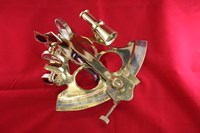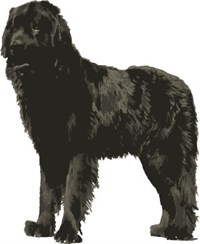|
Meriwether Lewis People Connections
Showing results 1-10 of 19
Loading results...
 William Clark was an American explorer, soldier, and territorial governor. Along with Meriweather Lewis, Clark led the Corps of Discovery across the Louisiana Purchase and to the Pacific Ocean and back east from 1804 to 1806 during Thomas Jefferson's presidency. He also represented American interests as a Superintendent of Indian Affairs.  When Meriwether Lewis and William Clark set out towards the Pacific Ocean in 1803, they carried a supply of mathematical instruments and tools for navigation. In addition to helping them chart a course, these instruments enabled them to document the newly-acquired landscape of the young United States. Their efforts also continue to be important today for understanding the land, its inhabitants, and the cartographic skill of Captain William Clark.  On June 19, 1803, Meriwether Lewis wrote to his friend William Clark asking the former captain to consider joining the expedition of the west. Many historians consider this to be the “official beginning point” of the Lewis and Clark Expedition.  On April 19, 1803, Meriwether Lewis arrived in Lancaster, Pennsylvania, to begin his studies with Andrew Ellicott. Considered the nation’s premiere astronomer, Ellicott would provide the explorer-to-be with the necessary skills and principles of astronomical observations and surveying, which could be applied to the techniques of navigation.  When Meriwether Lewis returned to Locust Hill after the Expedition, he seemed to have had no desire to take up his old role as plantation owner. In 1808, after his visit with family, he traveled back to St. Louis to assume his role as governor of Upper Louisiana, Lewis chose not to take any of the slaves from Locust Hill with him.  Little is known about the life of York. He was an enslaved man owned by William Clark, and later became a member of the Corps of Discovery. York is often mentioned in the journals kept by both Lewis and Clark throughout the course of the Expedition. These journal entries indicate that he experienced freedoms that few enslaved people had, though these freedoms would be revoked upon his return to the Clark plantation.  Sacagawea was either 16 or 17 years old when she joined the Corps of Discovery. She met Lewis and Clark while she was living among the Mandan and Hidatsa in North Dakota, though she was a Lemhi Shoshone from Idaho. She had been taken during a raid by the Hidatsa when she was either 11 or 12, and had lived at the Awatixa (Sakakawea) Village.  The image of Sacagawea as a mother is such an enduring part of her story that she is pictured with her son, Jean Baptiste Charbonneau, on the face of the U.S. Golden Dollar coin first minted in 2000. In February 1805, after a labor that Meriwether Lewis described as “tedious and the pain violent,” Sacagawea gave birth to her first child, who was affectionately nicknamed Pompey by Captain William Clark.  Arguably, Captain Meriwether Lewis's four-footed companion, a Newfoundland waterdog by the name of Seaman, eventually became one of the most famous members of the Lewis and Clark Expedition. He began his tour, however, in almost total obscurity and there he remained for more than a century.  Northeast Nebraska is considered Private George Shannon Country.
It was here in the late summer of 1804 where Private Shannon, the youngest member of the Corps of Discovery, was lost for 16 days.
|